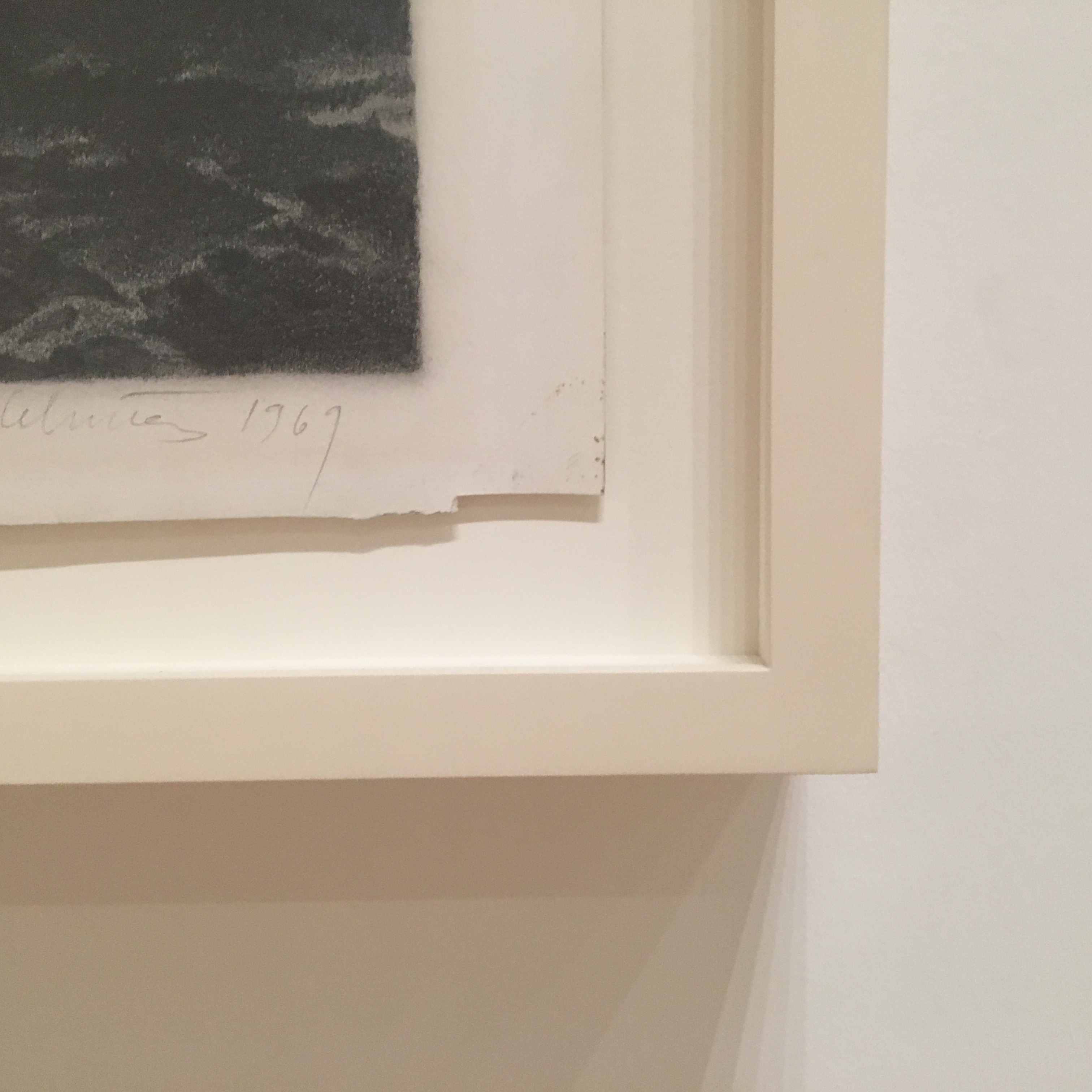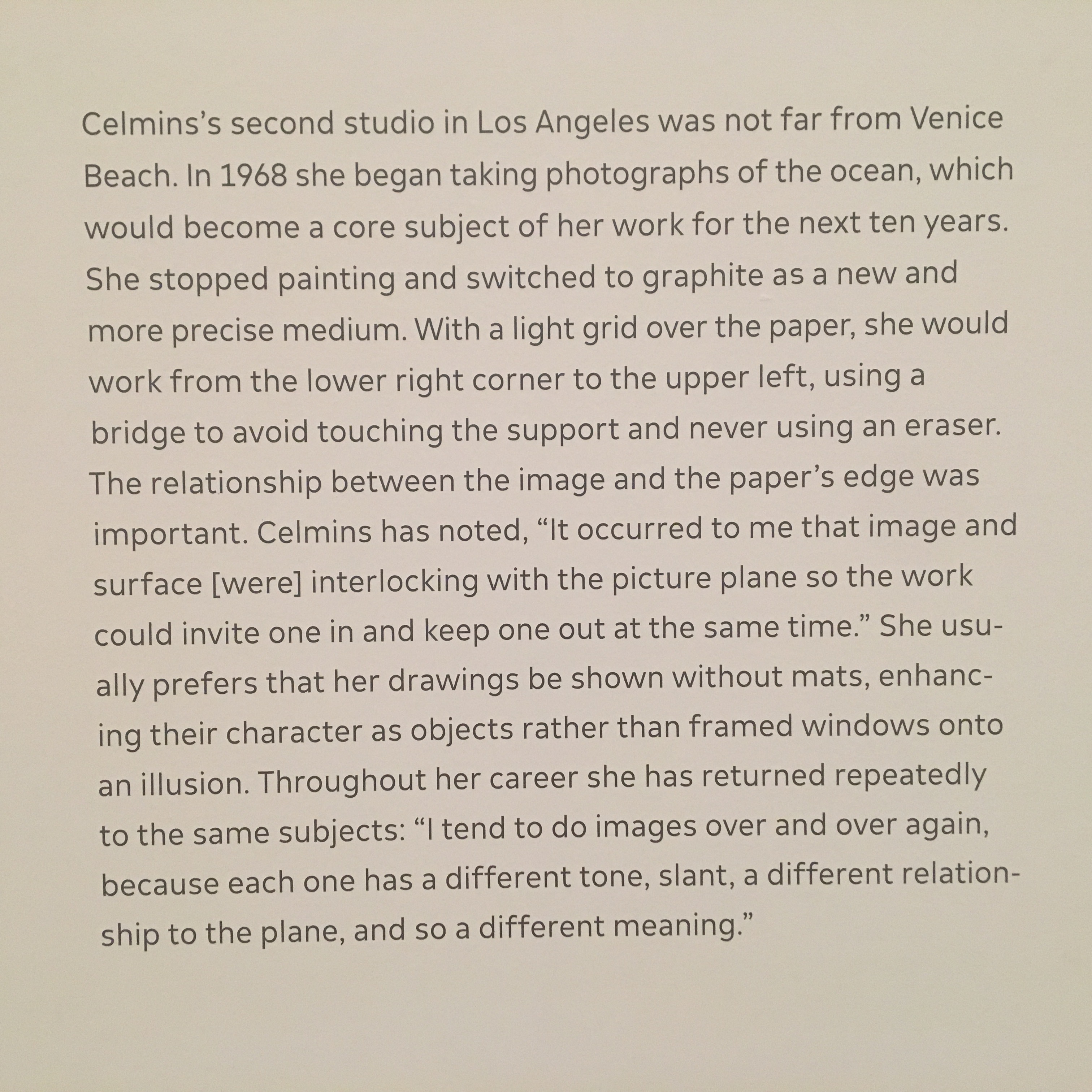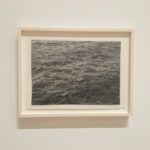With the Vija Celmins exhibition at SFMOMA, I indulged my time-honored teadition of catching great exhibits right before they come down😉. Especially for people whose work and perspective involves materials and aesthetic choices, this one offers a very rich experience. If you didn’t see the exhibit, there is still a chance though you’d have to travel for it, as it goes on to, I believe, Toronto and then New York.
One of our central practices when working with our customers is to discern the object qualities of a given work—its medium and materials, how they were applied, what we might be able to glean about artistic intent and art historical precedents for presentation of like works. Even when something is perceived as a picture—say, a work on paper like a drawing or an etching—it’s helpful to note how the composition of a work relates to its page, or how the paper was treated by the artist, further imparting own object qualities in the process. Smudges in margins, pin holes at corners, torn edges, yes—this might tell part of a story. But papers are myriad in composition and texture, and respond differently after being heavily worked, erased, or amended with paints, inks, collaged elements. All of these challenge a planar, 2-d view of a work.
And there is the art-historical presence of the frame… The addition of functional and decorative borders is an old practice with roots in architecture and decorative arts. And we think at Sterling of frames as fine architectural expressions of articulated space incorporating decorative elements, preservation elements, and structural elements. By defining a work in terms of its art historical influences and precedents, we can look for “appropriate” architecture to frame a given work.
So I was very impressed by the degree to which Celmins’ practice holds the work-as-object so central to her processes. And when we frame contemporary works, though the architectural style tends to be simple in concept its success lies in the thoughtful consideration and execution of details; choice of materials; and sympathetic application of tone, texture, proportion.
Celmins prefers much of her work to be presented, as objects. Numerous examples of this exist throughout the exhibit. Here are several of her untitled Ocean drawings from the late 60’s into the 70’s. All of these drawings were made with pencil on paper which was first coated with an acrylic ground. All are the same in size—but these examples show instances of how scale of mouldings and tone of finishes, as well as amount of visual float all work together to present the works in a fitting architecture which presents the works as both as drawings and as objects—but made by different framers for different collectors at different times. An illustration of nuance and its importance in the framing of contemporary art!
#SFMOMA#Celmins #framing #presentation#arteducation #arthistory








